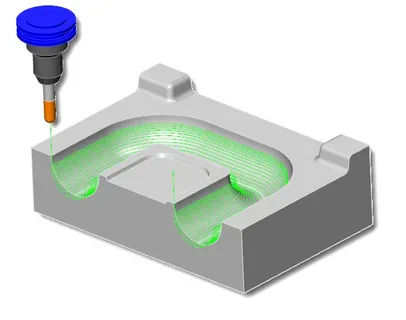CNC (Computer Numerical Control) machining has revolutionized manufacturing by enabling precise and efficient production processes. However, even with advanced technology, certain common toolpath mistakes can compromise the quality of the final product and lead to increased costs. Understanding these pitfalls and implementing strategies to avoid them is crucial for machinists aiming for optimal performance.
Incorrect Tool Selection
Choosing the appropriate tool is fundamental in CNC machining. Selecting the wrong tool for a specific operation can lead to suboptimal results. For instance, using a large-diameter tool for intricate details or selecting an inappropriate tool material for the workpiece can result in poor surface finish, excessive tool wear, or even tool breakage.
To avoid this mistake, it’s essential to match the tool to the job requirements. Utilize smaller diameter tools for detailed work and ensure that the tool material is compatible with the workpiece material. Consulting tooling manufacturer guidelines can provide valuable insights into optimal tool selection based on the material and specific machining operations.
Inaccurate Toolpath Programming
Errors in G-code programming or CAM (Computer-Aided Manufacturing) software can lead to incorrect toolpaths, causing machining errors or even machine crashes. Such inaccuracies can compromise part quality and may result in costly downtime.
To mitigate this risk, always review G-code programs thoroughly before executing them on the CNC machine. Employ simulation tools to visualize toolpaths and identify potential issues before actual machining begins. Encouraging peer reviews of programs can also help catch errors that might have been overlooked.
Ignoring Cutting Parameters
Neglecting to optimize cutting speeds, feed rates, and depth of cut can lead to excessive tool wear, poor surface finishes, and even part damage. Improper cutting parameters can also cause unnecessary strain on the machine, reducing its lifespan.
To avoid this, consult manufacturer specifications for optimal cutting speeds and feed rates based on the material and tooling used. Conduct test cuts to determine the best parameters for specific setups and materials. Implementing monitoring systems that provide real-time feedback on machining parameters can also aid in making necessary adjustments during operations.
Poor Material Fixturing
Inadequate fixturing can lead to workpiece movement during machining, resulting in dimensional inaccuracies and potential safety hazards. Ensuring that the workpiece is securely and accurately held in place is vital for achieving precise results.
To prevent this issue, design and use appropriate fixtures that hold the part securely and precisely during machining. Consider the weight and size of the part, the clamping force required, and any potential forces that could be applied during machining. Regularly inspect fixtures for wear and replace them as necessary to maintain their effectiveness.
Neglecting Machine Maintenance
Failing to perform regular maintenance and cleaning can lead to machine malfunctions, reduced accuracy, and compromised part quality. Over time, debris and wear can affect machine components, leading to unexpected downtime and increased repair costs.
To avoid this, establish a routine maintenance schedule that includes lubrication, cleaning, and inspection of critical components. Ensure that operators are trained in proper maintenance procedures to prevent buildup and contamination. Regular maintenance not only prolongs machine life but also ensures consistent machining performance.
By being aware of these common CNC toolpath mistakes and implementing strategies to avoid them, machinists can enhance the efficiency, accuracy, and longevity of their machining operations. Continuous learning and adherence to best practices are key to achieving optimal results in CNC machining.






